Several operators in Namibia are now bolstering their classic safari offerings, which have long tracked desert-adapted species of elephant, black rhino and lion, with a new focus on walking safaris that take in Namibia’s evolutionary endemic wonders. Although the creatures are lurking everywhere, it often takes a trained eye to spot them. Quality guides are invaluable on safaris like this – choose wisely.
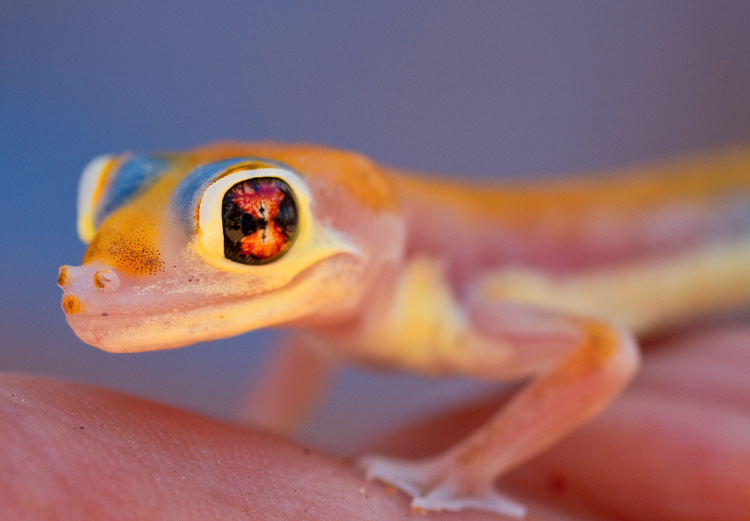
One of Namibia’s endemic gems, the cartoon-coloured palmato gecko has several quirks that keep it alive in the desert. First are its feet – they are webbed which allow it to move more quickly across the soft sand surface. Next are its oversized eyelid-lacking eyes – besides providing sight, they are also used to harvest moisture. The palmato gecko uses these large eyeballs to condense early morning fog, before licking off the precious, thirst-quenching proceeds with its long tongue. The process also keeps its eyes clean and moist.
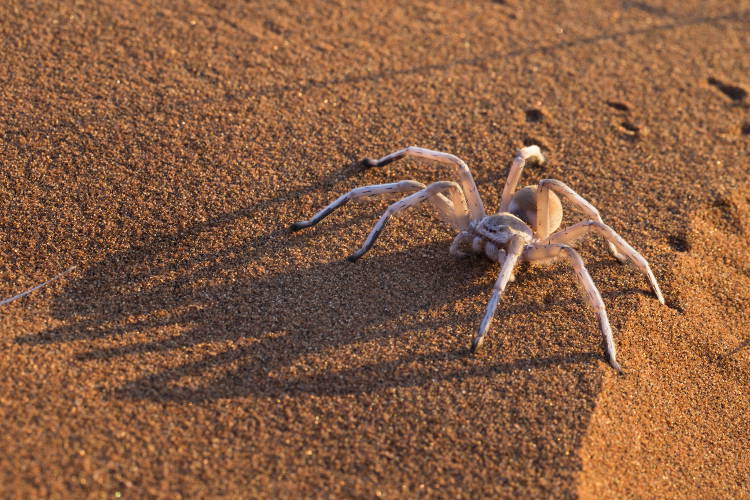
Although this tiny 20mm spider can knit an intricate trap door out of silk and sand, and shift up to 80,000 times its own body weight while creating its silk-lined burrow beneath the surface of the Namib, the golden wheel spider is more famous for its fast acting flight response. When away from the safety of its home it flees its predators, typically parasitic spider wasps, by turning onto its side, folding its eight legs into a wheel-like structure and cartwheeling down the dunes at an astonishing rate of 2600 revolutions per minute. The golden wheel spider, which hunts at night, is mildly venomous – it isn’t considered to be harmful to humans.
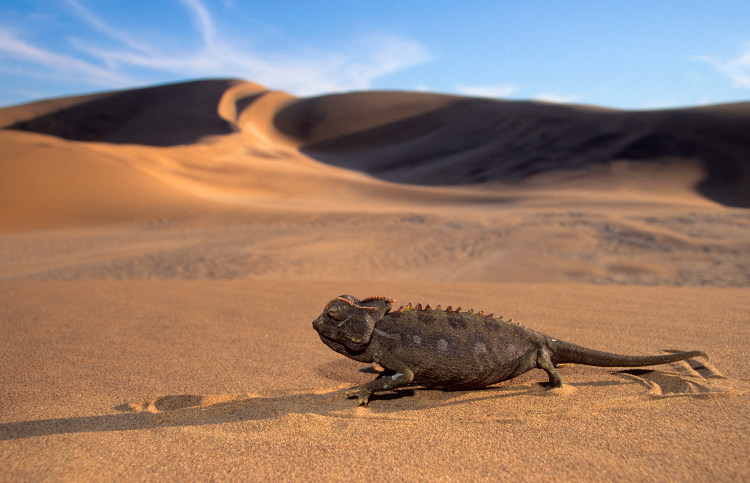
The Namaqua chameleon uses its ability to change colour to regulate its temperature, shifting its skin colouring to black in the cooler mornings to absorb heat, and then to lighter shades to reflect the radiation as the day grows hotter. It can even mix and match the colours at the same time depending on the orientation of the sun. The Namaqua chameleon also digs holes to aid in its body temperature control. To stay hydrated in such harsh habitates, this chameleon also excretes salt from nasal glands. One of southern Africa’s largest chameleons, the Namaqua species can exceed 60cm in length. Unlike most other chameleons, which spend the majority of their time in trees, this desert-dwelling species’ tail is not prehensile and is much shorter than its body.
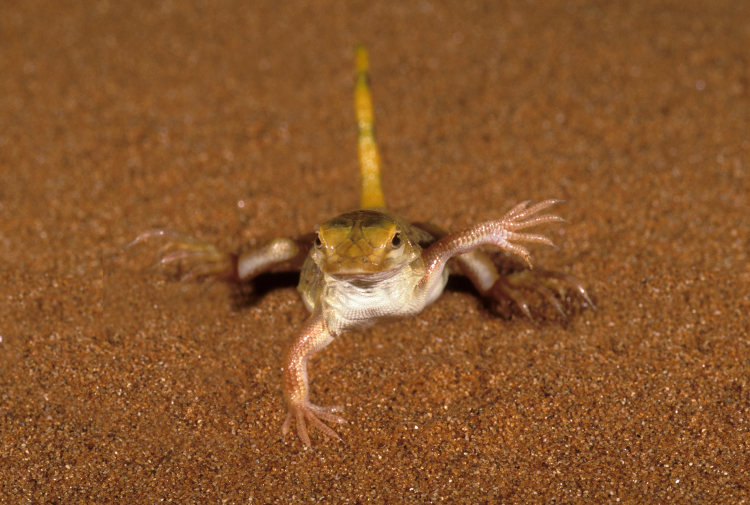
This flattened snout lizard is renowned for its dancing. Yes, dancing. Although it can withstand temperatures up to 44ºC, it can still overheat on the hot Namib sand, so it performs what is known as the ‘thermal dance’, a humorous set of moves that involves it holding its tail and two feet in the air at a time. Its unique shovel-like snout enables it to dive into the sand and swim away to avoid predators. The cooler sands beneath the dune’s surface are also comfortable sleeping quarters for this lizard. If diving isn’t possible, they do jump and bite to defend themselves. It feeds on small insects and beetles, and gets all its moisture from them.
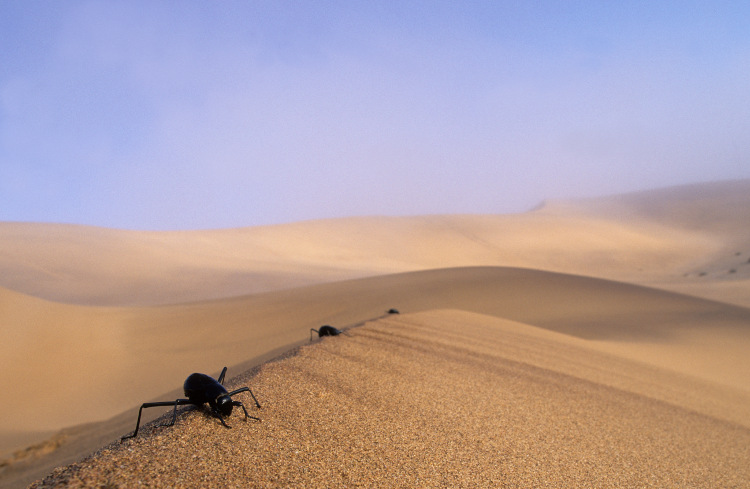
There are around 200 species of Tok tokkie beetles in Namibia, but the fog-basking variety that is endemic to the Namib is particularly noteworthy for its desert adaptations. When the cool moist wind blows off the Atlantic in the early mornings these beetles stand on dune crests, facing the breeze with their bodies angled up into the air. The hydrophilic surface on its back causes the fog to condense into water droplets, and once they combine to reach a diameter of 5mm or so in size, the whole drop breaks the static attraction to the back and rolls down the body and into the mouthparts of the beetle.
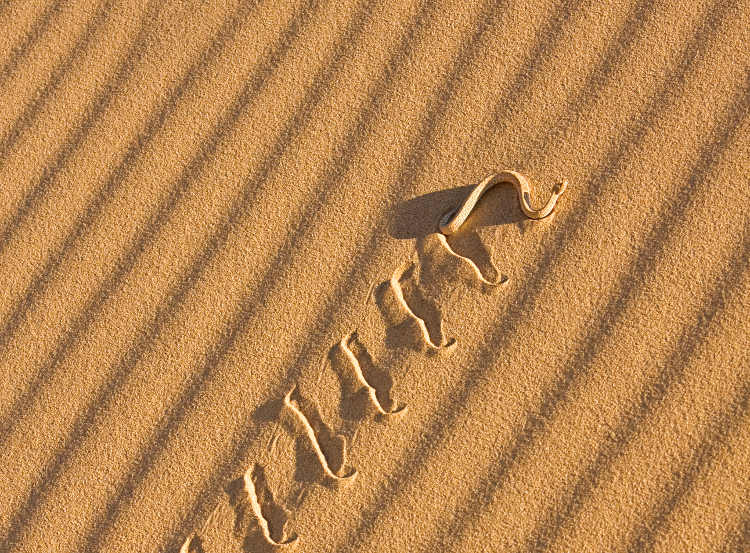
Also known as the sidewinding adder, this petite 25cm-long snake uses a sidewinding motion to move efficiently across the soft sand on dune faces – crucially, it also minimise its contact with the scorching Namib sands. Due to it being an ambush hunter, it is very hard to see as the snake buries all but its eyes and the tip of its tail just beneath the sand’s surface. It lays in wait until prey – lizards and geckos – skirt by unaware. The sidewinder then seizes its meal and incapacitates it with venomous bite.
If tracking the Namib’s unique desert critters sounds perfect, take on the Tok Tokkie Trail in the NamibRand Nature Reserve – it’s a three-day guided walk with top notch guides. Wilderness Safaris also cater for this type of safari at its Kulala lodge in the Namib-Naukluft National Park. Shorter taster safaris in the dunes outside Swakopmund are possible and can be booked with an operator there, as can half-day walks in Dorob National Park.
Matt Phillips is Lonely Planet's Destination Editor for sub-Saharan Africa. You can follow him on Twitter @Go2MattPhillips